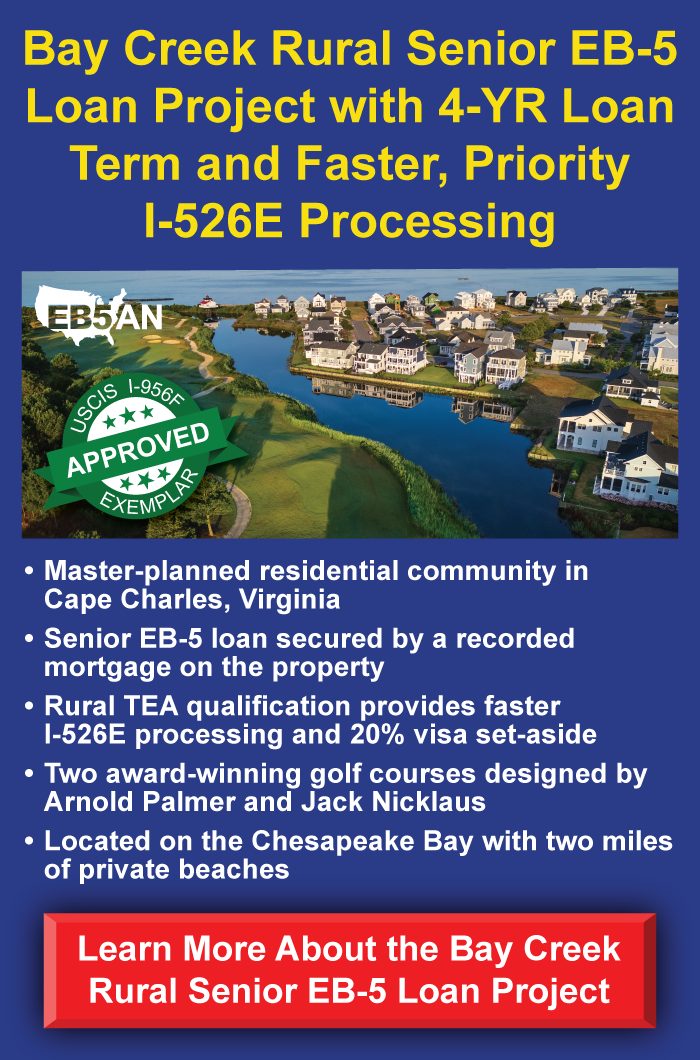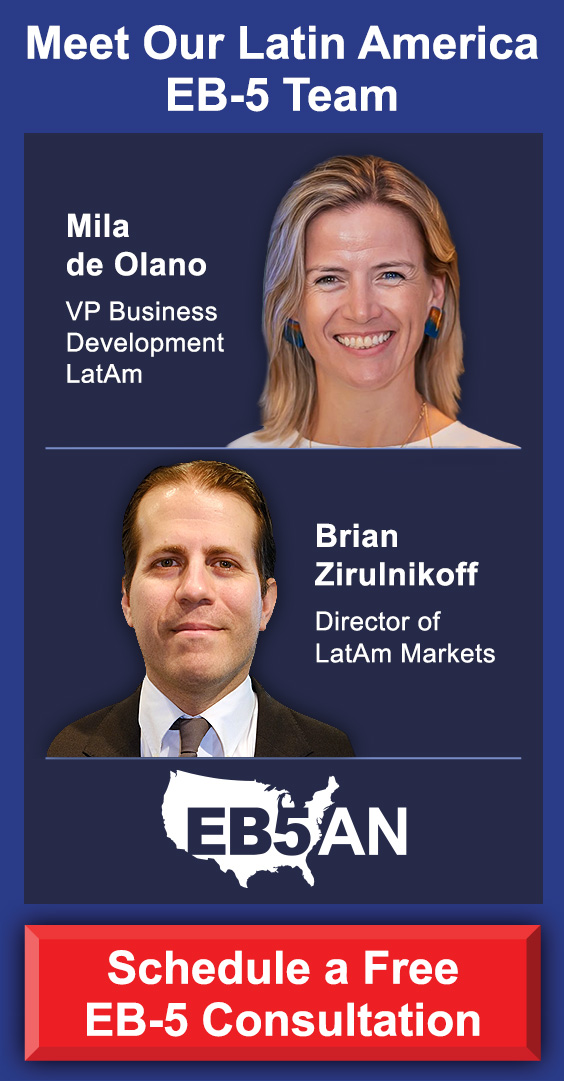As global interest in the United States EB-5 Immigrant Investor Program grows, a common question has arisen among international investors: Can I apply for multiple U.S. visas at the same time as pursuing an EB-5 visa?
For investors who already hold a non-immigrant visa or plan to travel to the U.S. for other purposes, understanding how EB-5 intersects with other visa categories is critical.
The short answer is yes. Applying for multiple U.S. visas, including EB-5, is often possible.
There are, however, important legal, procedural, and strategic considerations to take into account, all of which we will explain below in detail.
Understanding the EB-5 Program
The Principle of Dual Intent
Concurrent Filing and Adjustment of Status
Applying for EB-5 While on Other U.S. Visas
The 90-Day Rule: Timing Matters When Applying for EB-5
Maintaining Status During EB-5 Processing
Legal and Strategic Advice Is Critical
It Is Possible, But Plan Carefully
Understanding the EB-5 Program
The EB-5 program allows eligible foreign nationals to apply for U.S. lawful permanent residence (a Green Card) by investing either $800,000 in a targeted employment area (TEA) or $1,050,000 in a non-TEA. The project must then use these invested funds to create at least 10 full-time jobs for U.S. workers.
After filing their initial I-526E petition and having it approved, investors (and their spouse and unmarried children under 21) can obtain conditional Green Cards. Two years later, they must file an I-829 petition to remove the conditions and receive full permanent residency.
Because EB-5 is an immigrant visa with a clear path to a Green Card, it confers long-term immigration intent, something that plays a significant role in how it can interact with other U.S. visa types.
The Principle of Dual Intent
Immigrant intent, which refers to a person’s intention of immigrating to the United States, is a vital component of the U.S. immigration process.
Visas typically come in two forms: immigrant and nonimmigrant. The former is intended to lead to permanent residency, while the latter is generally meant to be more temporary.
Nonimmigrant visas can be further broken down into two categories—single and dual intent—based on their immigrant intent.
The legally recognized concept of dual intent allows a person to hold a temporary visa while also intending to immigrate permanently.
This dual intent is permitted with certain visa types, such as the H-1B (temporary worker) and L-1 (intra-company transferee) visas, but not with others, such as the F-1 (student), B-1/B-2 (visitor), or J-1 (exchange visitor) visas.
Applying for an EB-5 visa while on a nonimmigrant visa that does not support dual intent can be problematic. Customs officers may interpret it as an intention to violate the terms of your current visa, especially if, for instance, someone on a tourist visa signals an intent to immigrate permanently.
Concurrent Filing and Adjustment of Status
Recent reforms to the EB-5 program, particularly under the EB-5 Reform and Integrity Act of 2022, now allow for concurrent filing of an investor’s I-526E immigrant petition and I-485 adjustment of status application. This provision has significantly streamlined the immigration process for investors already lawfully present in the U.S. on another visa.
If a visa number is available (i.e., there is no backlog for the investor’s country of chargeability), an investor can file Form I-485 while their I-526E application is still pending. This allows the investor to remain in the U.S. legally and even apply for employment authorization and advance parole (travel permit) while awaiting Green Card approval.
Applying for EB-5 While on Other U.S. Visas
Let’s explore how EB-5 interacts with some of the most common non-immigrant visa categories.
H-1B
H-1B visa holders, typically working professionals sponsored by a U.S. employer, can submit an EB-5 application without jeopardizing their current visa. Since H-1B supports dual intent, pursuing a Green Card through investment is fully consistent with maintaining one’s H-1B status.
Many H-1B holders use EB-5 as a backup plan, especially given the lengthy employment-based Green Card backlogs for nationals from countries like India and China. In comparison, EB-5 can offer a much faster route to permanent residency, and concurrent filing allows them to remain employed legally while waiting for their EB-5 petition to be processed.
E-2
The E-2 visa is a non-immigrant visa for investors from countries that maintain treaties with the U.S. It allows individuals to manage or direct operations of an enterprise in which they’ve invested a “substantial” amount of capital.
Though the E-2 visa does not formally support dual intent, in practice, many E-2 visa holders pursue the EB-5 program as a pathway to permanent residency. However, transitioning from E-2 to EB-5 requires careful planning. For example, the E-2 investment itself may not qualify under EB-5 rules, so a separate EB-5–compliant investment may be necessary.
F-1
International students on an F-1 visa may also explore the EB-5 program. However, because F-1 is a non-immigrant visa with no dual-intent allowance, filing an immigrant petition (like I-526E) can create complications.
For students filing for EB-5 while on F-1 status, it’s critical to maintain clear documentation and consult with immigration counsel to time their filings appropriately.
B-1/B-2
The B-1 (business visitor) and B-2 (tourist) visas are intended for short-term, non-immigrant stays.
Despite these visas explicitly prohibiting immigrant intent, it is possible to enter the U.S. on a B-1/B-2 visa while an EB-5 petition is pending as long as you disclose your pending I-526E petition on your B-1/B-2 application form.
While it’s technically possible to file an I-526E while holding a B-1/B-2 visa, doing so without full awareness of the risks would be unwise. And one of the most significant of these risks revolves around what has become known as “the 90-day rule.”
The 90-Day Rule: Timing Matters When Applying for EB-5
The 90-day rule is a guideline used by the U.S. Department of State to assess whether a foreign national misrepresented their intent when entering the U.S. on a non-immigrant visa.
Specifically, if someone applies for a Green Card, such as through EB-5, within 90 days of entering the country, authorities may presume they had immigrant intent, even if they claimed otherwise.
While USCIS no longer strictly follows this rule, filing too soon after entry can still raise red flags. To reduce risk, investors should ideally wait at least 90 days before taking any actions that could be construed as displaying immigrant intent, including filing an EB-5 application.
Maintaining Status During EB-5 Processing
If you are in the U.S. on a non-immigrant visa and apply for EB-5, it’s crucial to maintain a valid status until you receive approval for your adjustment or status. Overstaying or violating the terms of your current visa can jeopardize your EB-5 application and lead to bars on future entry.
This is another reason concurrent filing has become so valuable. It allows applicants already in the U.S. to apply for a work permit and travel document, helping bridge the gap between their non-immigrant status and permanent residency.
Legal and Strategic Advice Is Critical
Given the complexity of managing multiple visa applications, immigration statuses, and long-term goals, working with an experienced EB-5 attorney is not just recommended; it’s essential. Each visa type has unique considerations, and a single misstep can delay or derail a petition—and perhaps your ability to stay or immigrate to the U.S. altogether.
For example, an improperly timed vacation while awaiting your advance parole or a poorly explained source of funds can have serious consequences.
Investors must also plan for extenuating circumstances, such as an I-526E denial, changes in personal status, or legislative shifts in EB-5 rules, all of which a good immigration attorney can help with.
It Is Possible, But Plan Carefully
It is possible to apply for multiple U.S. visas alongside EB-5, but doing so requires careful legal and procedural navigation. Holding or applying for other non-immigrant visas doesn’t automatically disqualify someone from pursuing EB-5, but understanding the rules of each visa type, especially regarding dual intent and status maintenance, is crucial.
For investors serious about obtaining U.S. permanent residency through EB-5 while maintaining the flexibility to study, work, or travel in the meantime, a comprehensive immigration strategy is key. When structured wisely, applying for multiple visas can enhance, not hinder, an investor’s path to a new life in the United States.
At EB5AN, transparency is of the utmost importance to us. EB5AN has helped more than 2,700 families from 70+ countries become lawful permanent residents of the United States. Our team has more than a decade of experience, and we offer our clients first-rate, low-risk EB-5 regional center projects with a 100% USCIS project approval rate.
If you would like to know more about your EB-5 investment options, book a free call with our expert team today.











